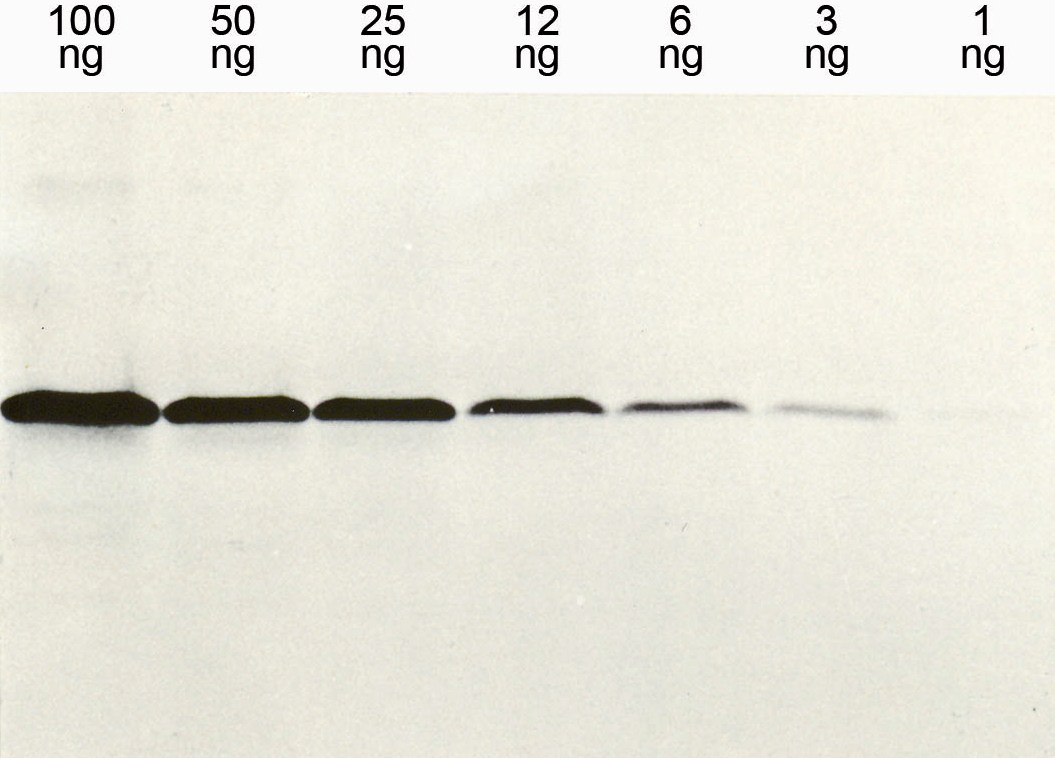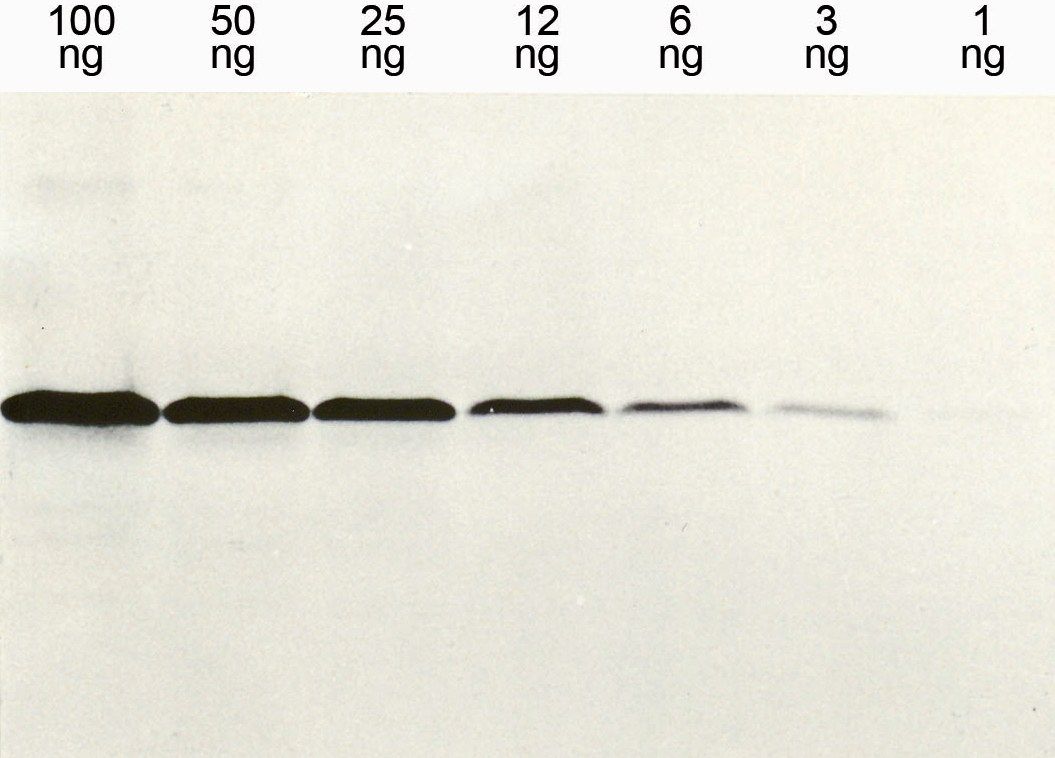Anti-His Epitope Tag (rec) from Mouse (13/45/31) – unconj.

-
Overview
SKU DIA-900-100 Specificity Species Reactivity Immunogen Host Species Isotype Clone Clonality (Mono-/Polyclonal) Application Flow Cytometry, Immunocytochemistry, Immunofluorescence, Immunohistochemistry (frozen sections), Immunohistochemistry (IHC), Western Blot
Conjugation Dilution ELISA 0.1 – 0.4 µg/ml, Flow Cytometry 5 – 10 µl/10^6 cells, Immunofluorescence 1 – 4 µg/ml, Immunohistochemistry (IHC): 1 – 4 µg/ml, Immunoprecipitation 4 µg/ml, Western Blot (WB): 1 – 4 µg/ml
Format 0.05% NaN3, 6% BSA, in PBS (pH 7.4), ProteinA/G purified antibody (from culture supernatant)
Application Note Product line / Topic Intended Use Temperature - Storage Temperature - Transport Search Code 6his, anti his, DIA900, hexahistidine, his6, histag, histidin tag, histidine, polyhistidine
Manufacturer / Brand Uniprot_ID Gene_ID Ordering Information Alias 6*His, 6His, 6histag, 6XHis, hexahistidine, HHHHHH, HIS, His Epitop-Tag, His Epitope-Tag, His Tag, his6, histidin tag, polyhistidine
- Datasheets and Downloads
-
Additional Product Information
Reactivity
The mouse monoclonal anti-(His)6-tag antibody, clone 13/45/31-2 (H. Zentgraf/DKFZ Heidelberg, Germany), specifically detects any kind of histidine-tagged proteins in cells and complex cellular lysates. With a value of 3x 10‐10M (Biacore™ Analysis) the affinity of the antibody is outstanding This monoclonal antibody specifically reacts with recombinant proteins containing an epitope of at least 6 histidine residues, located at the N-terminus, C-terminus or at both termini. A higher number of histidine residues leads to an increased binding affinity of the antibody, e.g. an expression product with 10 histidine residues increases the affinity about 10- to 20-fold. In most cases additional flanking amino acids aren’t required for antibody binding, therefore enabling the choice of many different expression vectors on the only condition that the epitope is spatially available.
Background
Recombinant proteins are utilized for various purposes in molecular biology such as the production of antibodies for investigation of the mechanism of protein-nucleic acid or protein-protein interactions. Many prokaryotic expression vectors have been established enabling synthesis of the protein of interest as a fusion with a peptide, thus facilitating purification. Expression of recombinant proteins in E. coli as a fusion protein with neighbouring histidine residues is one of the most popular methods, because the proteins have useful attributes. The affinity of the histidine-tag motif to Ni2+ by chelation is strong and selective enough to enable purification of the protein to homogeneity by affinity chromatography on a Ni2+-NTA adsorbant.

Detection of (HIS)6-p53 Hela cell lysates (Transfection with HIS-tagged protein vector, SDS-PAGE and western blotting according to standard procedures). Sensitivity: Specific detection of 1ng protein in 8μg total proteins at a 1:100 antibody dilution / Antibody di-lutions up to 1:10.000 for less sensitive detections (ca. 6ng HIS-tagged protein).
References:
Clone 13/45/31 is one of the most cited His-Tag Antibodies world wide. For a complete list of references go to:
https://www.dianova.com/en/service-info/products-in-focus/his-tag-antibodies/his-tag-antikoerper/Initial Publication:
1. Zentgraf H, Frey M, Schwinn S, Tessmer C, Willemann B, Samstag Y, Velhagen I. Detection of histidine-tagged fusion proteins by using a high-specific mouse monoclonal anti-histidine tag antibody. Nucleic Acids Res.16,3347-8, 1995. -
Images

Sensitive Detection of His-Protein with anti-His-Tag Antibody Clone 13/45/31
